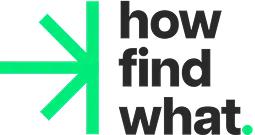In a fast-moving world where knowledge expires quickly and career paths are increasingly non-linear, a personal learning plan (PLP) is no longer a nice-to-have — it’s a career essential. Whether you want to upskill, switch roles, or stay relevant in your current one, a well-structured PLP keeps your growth intentional and measurable. But too many plans fizzle out because they lack strategy. Instead, build a personal learning plan that actually works.
1. Start With Purpose, Not Pressure
Before diving into online courses or certifications, take a step back. Ask yourself: What do I want to achieve in the next 6–12 months? Tie your learning to specific goals. Do you want to lead a project, shift into a new role, or become more effective in your current job? Avoid vague ambitions like “get better at communication” — instead, aim for “learn to facilitate team meetings effectively” or “write clearer stakeholder reports.”
Your purpose will keep you focused when motivation dips. It also helps you filter out distractions. A shiny new webinar may look interesting, but if it doesn’t serve your goal, skip it.
2. Assess Your Current Skills Honestly
A successful learning plan starts with self-awareness. Perform a skills audit to identify both strengths and gaps. Use frameworks like SWOT (Strengths, Weaknesses, Opportunities, Threats), or simply list what you’re confident in vs. what you’d like to improve.
For even better insight, ask for feedback from peers, mentors, or managers. External input often highlights blind spots — or untapped strengths — that self-assessments miss.
Combine this reflection with market research. If you’re aiming for a promotion or a career pivot, look at job descriptions or industry benchmarks to understand what’s expected.
3. Choose the Right Learning Methods
People learn differently — and not all skills are best acquired the same way. Reading books may be great for strategy, but poor for practicing presentation skills. Mix and match methods to suit both your learning style and the type of skill you’re developing.
Formal learning: Courses (online or in-person), certifications, bootcamps
Informal learning: Podcasts, books, newsletters, webinars
Experiential learning: Stretch projects, job shadowing, volunteering, mentorship
Social learning: Peer coaching, communities of practice, discussion groups
The goal isn’t to do everything. It’s to select the few, high-value activities that fit your life and goals.
4. Make It Measurable and Time-Bound
A common pitfall in personal learning is being vague. The SMART Goals framework – where goals should be specific, measurable, achievable, relevant and time-bound – provides a better way to set yourself up for success. “Learn more about analytics” is too broad. Try this instead: “Complete Google Analytics Fundamentals course and apply concepts in my next campaign by October.”
Your plan should include:
- Clear objectives: What will you learn?
- Tactics: How will you learn it?
- Timeframe: When will you complete it?
- Success indicators: How will you know you’ve succeeded?
Use a simple tracker — even a spreadsheet or journal — to log progress and reflect regularly. Don’t forget to celebrate milestones to stay motivated.
5. Integrate Learning Into Your Workflow
Don’t wait for “extra time” — build learning into your day-to-day. Try time-blocking 30 minutes a few times a week. Listen to podcasts during commutes or lunch walks. Apply new skills in your current job instead of treating learning as separate from work.
The best learning is active, not theoretical. If you’re learning presentation skills, volunteer to run a meeting. Learning coding? Build a small side project. Integration creates momentum and builds confidence faster than passive study.
6. Stay Accountable and Adaptable
Accountability keeps your learning plan alive. Share your goals with a mentor, manager, or learning buddy. Better yet, schedule monthly check-ins to review what’s working — and what isn’t.
Also, don’t be rigid. Your interests, role, or life circumstances might shift. That’s okay. Update your plan every quarter if needed. Learning should feel like progress, not punishment.
7. Make Reflection Part of the Plan
Build in time to reflect not just on what you’re learning, but how it’s impacting your thinking and performance. Ask yourself:
- What am I doing differently now?
- What’s working well?
- What do I want to dive deeper into?
This habit turns learning from a checkbox exercise into a growth mindset. It also ensures you course-correct before drifting off track.
Begin Your Plan
A personal learning plan is more than a to-do list of resources — it’s a compass for your career. When anchored to your goals, adapted to your style, and integrated into your life, it becomes a powerful tool for both professional growth and personal fulfillment. Don’t wait for someone to send you to training. Build your own path — and make sure it’s one you’ll actually walk.

